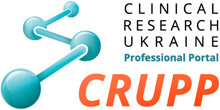Topic(s):
Acute Heart Failure-Treatment
Objectives:
To evaluate the efficacy and safety of early treatment with intravenous high watersoluble Quercetin (Q) in acute decompensated heart failure (ADHF) patients with reduced left ventricular ejection fraction (EF).
Design and Methods:
In openlabel multicenter (8 centers involved) clinical trial (phase 2) 91 patients admitted for ADHF were randomized either to Q1 scheme (n=28) or to Q2 scheme (n=34) or to control group (n=29). Inclusion criteria: chronic HF of ischemic etiology > 1 year, EF = 40%, sinus rhythm. Intravenous Q was used for 5 days with Q1 800 mg and Q2 450 mg total dose. All patients received recommended standard HF therapy. Primary surrogate endpoint: EF increase = 5%, EDV decrease = 5% and decrease = 6 points by HF severity scoring system compared the baseline values and those on day 10. HF severity score included: dyspnea, arrhythmia, orthopnoea, jugularvenous distension, crackles, gallop rhythm, hepatomegaly, edema, systolic blood pressure, respiratory and heart rate. The results of the difference in EF, EDV and HF severity score between baseline and 10th day were translated into points (high efficacy 3 points, moderate 2 points, poor 1 point, no effect 0 points) and summarized in each group. The secondary endpoint was evaluated by cardiovascular death and rehospitalization for HF within 180 days. All adverse events were used to assess the safety of Q.
Results:
The study groups did not differ in terms of demographic characteristics and main clinical data. EF increase = 5% was observed: Q1 group-in 67.9%, Q2-in 79.4% and in 55.6% patients of the control group. EDV decreased = 5%: Q1-in 69.2%, Q2-in 58.8% and in 51.8% of controls respectively. HF severity score (decrease = 6 points) was significantly higher in Q1 and Q2 in comparison to the control group (82.1, 82.4, and 62.1%, both p<0.05 respectively). The primary endpoint was 2.14 points in Q1, 2.12 in Q2, and 1.62 in the control group (both p<0.05). There was no significant difference in secondary endpoints between groups: 17.2% in Q1, 14.3 in Q2, and 24.1% in the control group respectively. Treatment by Q was safe without any serious adverse events.
Conclusion:
Our results show that intravenous Q contributes to the improvement of left ventricle contraction and remodeling, and reduces the clinical severity of HF in ADHF patients. According to our data, Q2 regime with the low dose of the study drug is preferred. Study results give the background for a further larger phase 3 trials of Q use in ADHF patients.
